“Lemons Rally is not a race!”
Rallymaster Jeff barked out our rally instructions at the driver’s meeting around 8:00 am on the Friday that marked the beginning of the Rust Belt Ramble. With a handful of other common sense warnings about respecting traffic laws and property, we read through our rally booklets and prepared to begin the day’s trip from the Detroit Bus Company parking lot. It was a haphazard collection of about 35 vehicles of varying ages, in conditions from “running and largely untested” to rat rod classics, rental cars, and “my hooptie is still on jack stands, so I’m taking my daily driver.”
I was probably the only one in this rally to qualify as the latter, despite Jeff telling me at the end of my last rally to “bring a sh*ttier car next time.” I’m sure you’ve heard about the best laid plans of mice and men. That was me. The rally car sat at home on stands, with a couple of stripped threads in the aluminum block, and a repair kit unobtainable in enough time to make the start of the rally. This was after a couple of weeks of working on the engine to cure an oil burning issue on an 18-year-old car that has already traveled the distance to the moon and beyond.
The choice was to either scratch my entry in the rally, or take the daily driver and endure the derision. At least all I would need to do is load up my usual road trip accessories (12-volt refrigerator, tool bag, an extra tablet and phone, Radenso DS1 radar detector, and some cold snacks), pack the luggage, and hit the road. Without having a theme for my car, I skipped making the vinyl graphics I had planned and instead used the two large Lemons Rally stickers I had left over from the Rocky Mountain Breakdown back in April.
For many of us, planning for a rally starts months in advance. We’re usually booking rooms early, hopefully at accommodations that don’t cost a small fortune. We plan out a theme for the car, and extend that to our choice of wardrobe if need be.
Most importantly, we prepare a vehicle, as long as it’s a car or truck, the older, more dilapidated, unusual, questionable and/or ridiculous, the better. As you can see here, we had everything from K-cars and a Chevy-powered Jaguar to an egg-themed Toyota Previa, a Geo Metro done up in Smurfs blue (with a driver to match), a well-worn Subaru Baja, and a Smart ForTwo posing as a Little Tikes Cozy Coupe.
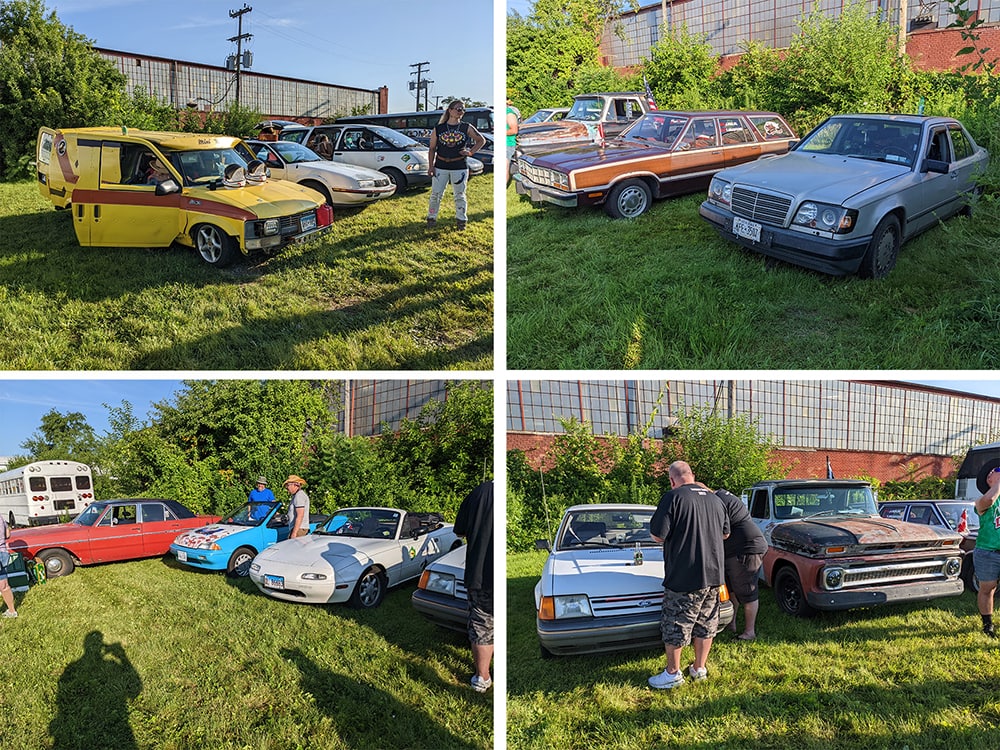
Some of the cars that participated in the rally. The yellow…contraption at the top left is a mini-truck front with a Chevy Astro van rear.
The Rust Belt Ramble promised to cut a swath through our portion of the country, and it did not disappoint. Starting in Detroit, the route would take us to nightly stops in Dayton, Pittsburgh and Buffalo. Having experienced the former Rocky Mountain Breakdown rally, I knew we were in for unusual checkpoints, historic locations, a few shenanigans, and a long slag along the back roads of America.
Day One: “All Your Transportation Are Belong to Us”
The first day of the rally featured drives to transportation relics of all sorts, and was bookended by a long-defunct car company.
We slowly filed out of the parking lot and headed to the first of our Michigan checkpoints – the Hamtramck Disneyland. Hamtramck, a city whose borders are surrounded by Detroit, was once a major Polish community in the area as well as home to a General Motors plant which produced many different car models over the decades. This particular Disneyland is an “art installation” spread across two backyard lots. Given that the lot was not open at this early hour, all we could see were the fronts of the houses.

Rudy’s daily driver at Hamtramck Disneyland.
Following that, we drove over to the ruins of the Packard Automotive Plant, which is just a few weeks away from demolition as I write this. The South American owner and developer had promised to begin a new development on the property, but nothing ever materialized. The owner missed a court hearing, and the city has now taken over the task of demolishing the entire site, with the owner on the hook for the bill. The ruins are spread across a few city blocks, and this is a small portion of it.
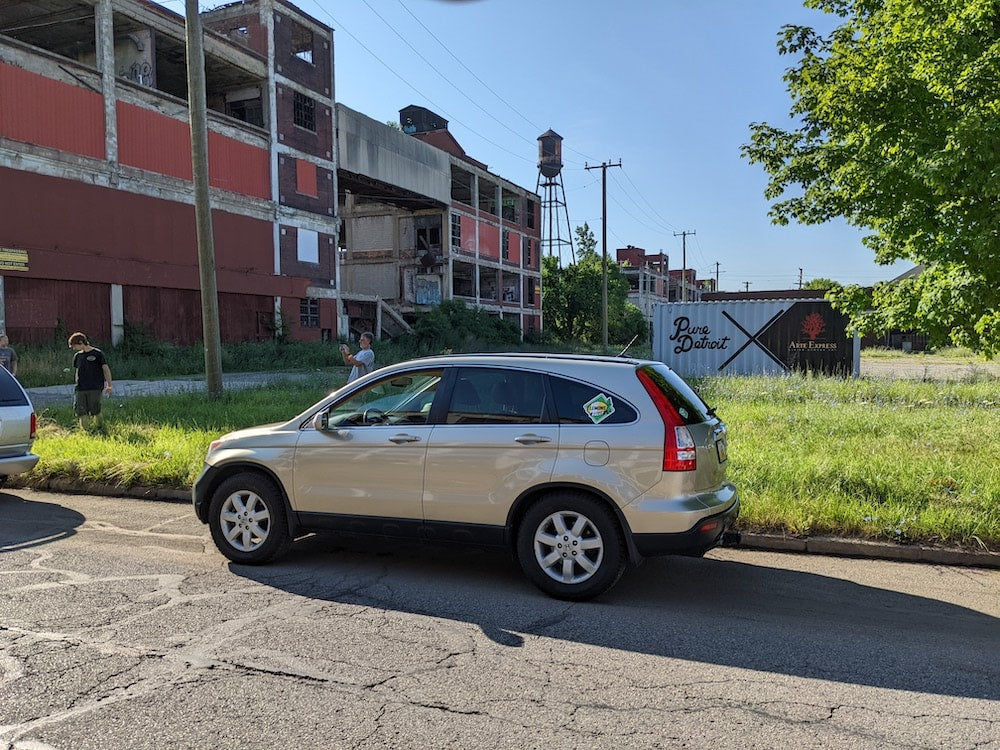
At the ruins of the Packard Automotive Plant.
The final Michigan checkpoint, Webber’s Waterfront Restaurant, was located on what is referred to as the Lost Peninsula. This is a tiny peninsula of Michigan that can be reached only by driving through Ohio or traveling by boat. As we were mere feet from Toledo, our first Ohio checkpoint was close by. The Great Lakes Museum moors a freighter, the Col. James M. Schoonmaker, launched in 1911 and retired in 1980, then opened as a museum ship in 2014.
Our following checkpoint was in the southwest corner of the Toledo area in Maumee. The Fallen Timbers State Memorial is located in a state park and commemorates General Anthony Wayne and the battle of Fallen Timbers (August 20, 1794) which has been called the last battle of the American Revolution, opening up the Northwest Territory for westward expansion.
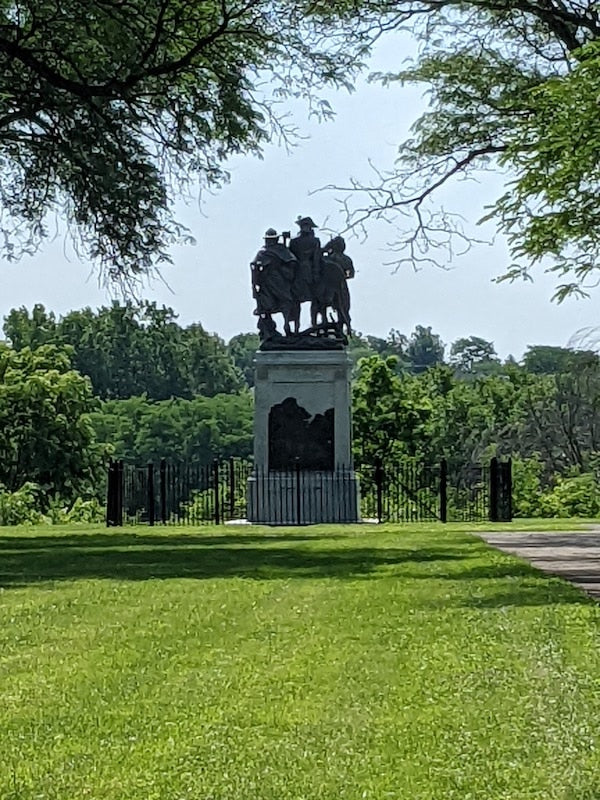
The Fallen Timbers State Memorial.
Not far away was our next stop, the Lima-Toledo Interurban Bridge, which spans the Maumee River and joins Lucas and Wood counties. Built in 1908, it was once the world’s largest earth-filled reinforced concrete bridge. Given economic conditions, the bridge was used by a few different railway companies until it was finally abandoned in 1937 by the Cincinnati and Lake Erie Railroad.
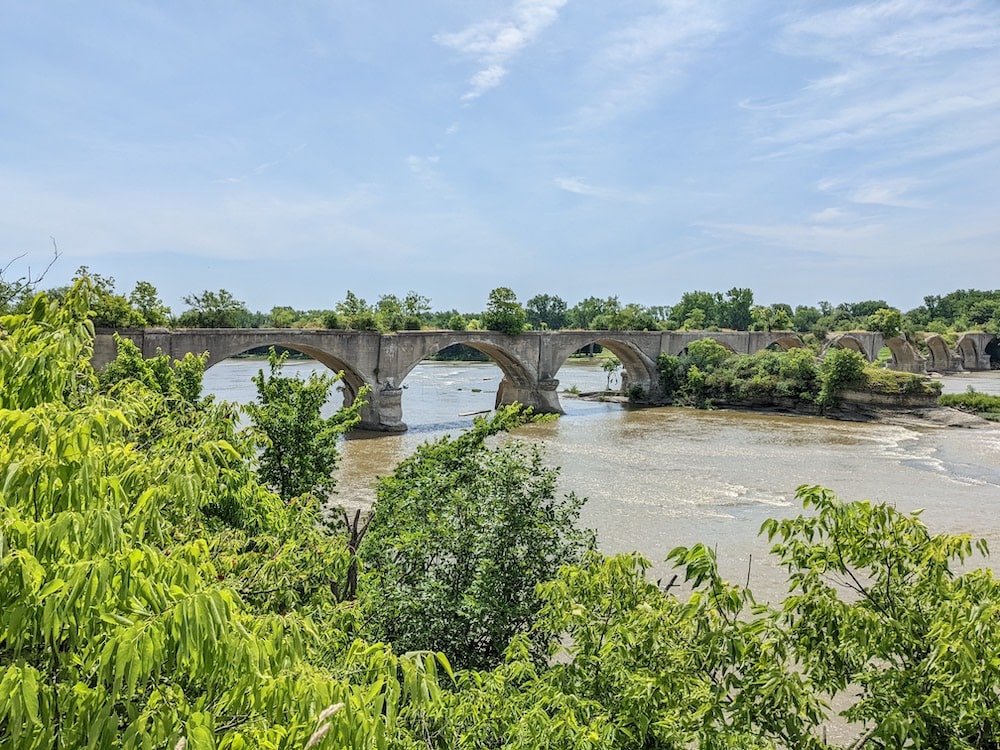
The Lima-Toledo Interurban Bridge.
The next checkpoint was a genuine piece of kitschy roadside Americana: The Tower of VW Bugs, located on the lot of a pawn shop in Defiance, Ohio.

The Tower of VW Bugs.
From Defiance, we headed to Delphos to locate the Museum of Postal History, then continued ahead to the site of the world’s first automobile crash in Ohio City. In 1891, John Lambert, owner of the automobile manufacturing company bearing his name, hit a tree root and crashed into a hitching post.
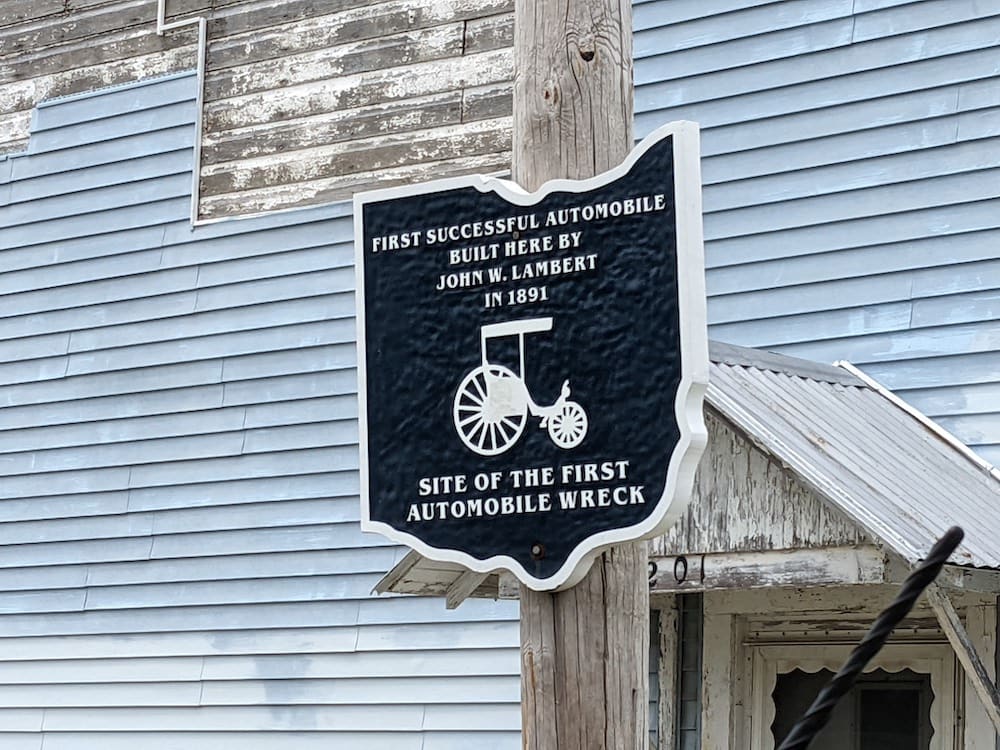
The Museum of Postal History.
Our next checkpoint was constructed long ago – the Miami and Erie Canal, which stretched from Toledo to Cincinnati. The specific section we had to locate was the Deep Cut, a 6,600-foot cut through hard blue clay as deep as 52 feet. It is now part of a parks system with recreation trails alongside the now-unused canal.
With automobiles, trains and watercraft covered, our next stop took us to relics from outer space. In Wapakoneta, we located the Armstrong Air & Space Museum. While we didn’t have time to visit the museum, there were plenty of NASA spacecraft outside on the museum grounds.
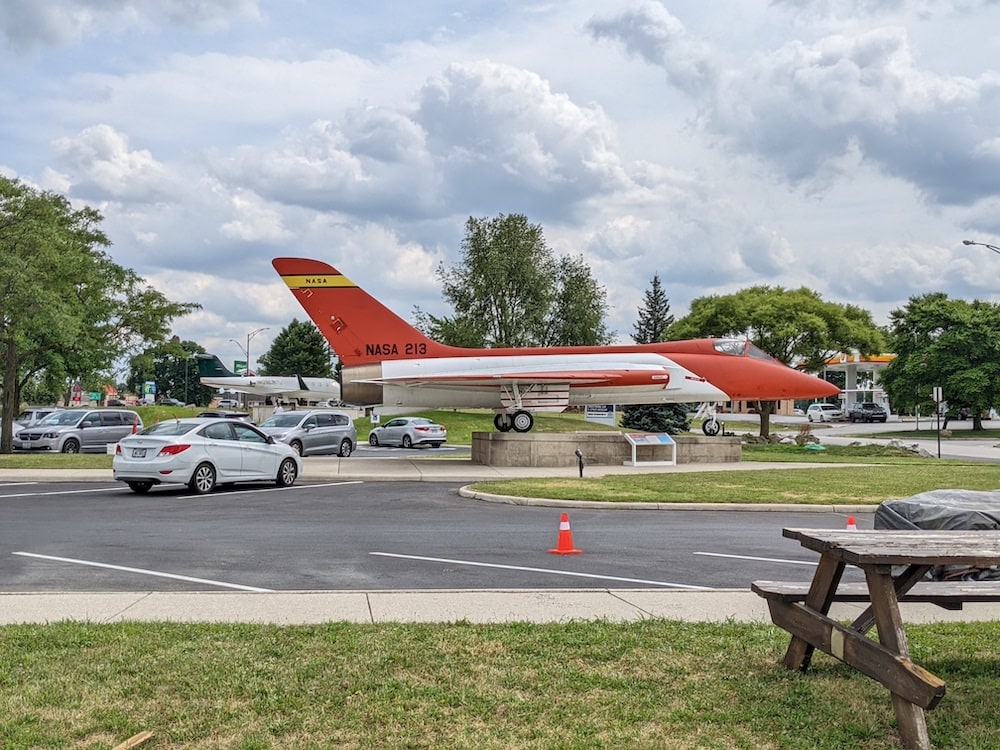
The Armstrong Air & Space Museum.
The only forms of transportation that may have applied to the next checkpoint might have been trains and stagecoaches. Our specific instructions? “Phoebe Ann Mosey’s famed rifle (kind of).” Mosey’s stage name was Annie Oakley, a sharpshooting entertainer who was popular in the late 1800s. Like many of the clues, there were sometimes multiple map locations which we had to decipher to find the correct checkpoint. The historical marker for Mosey’s birthplace, near Yorkshire, was on a narrow road out in farmland with a rifle in the back corner of the monument.
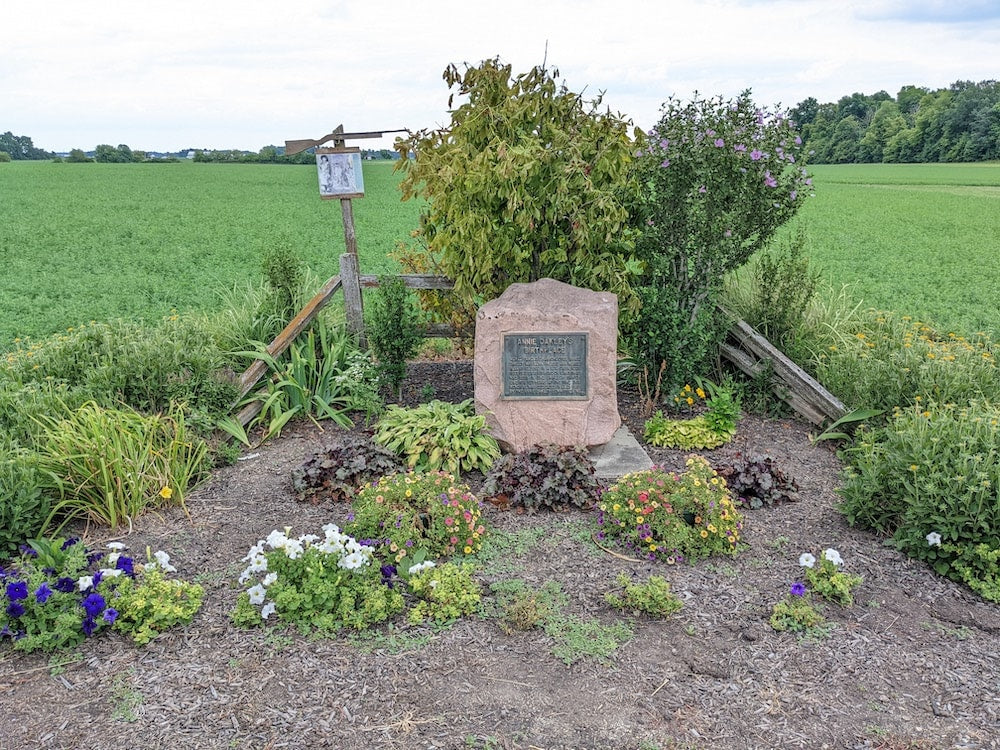
Annie Oakley’s birthplace.
Piqua, Ohio was next on our list, the task being to locate the now-defunct Piqua Milling Company. This particular grain mill produced what was called white foam flour. Piqua was also known for milling linseed oil.
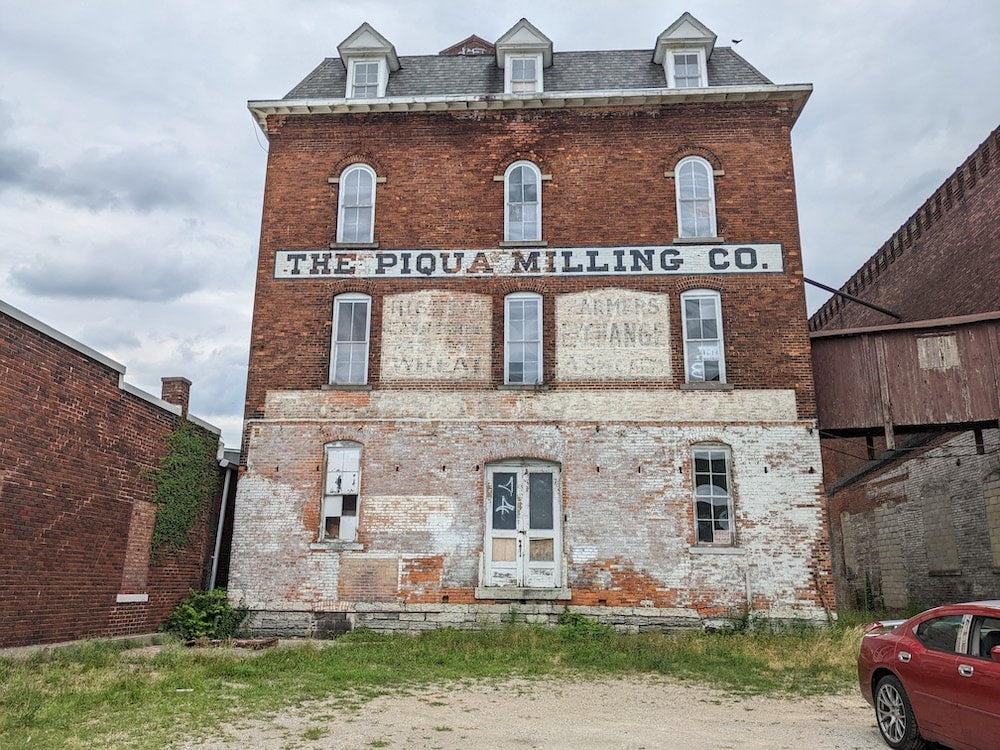
The Piqua Milling Company.
Trains, watercraft, automobiles, spacecraft…what could be next? In Dayton, our checkpoint was The Wright Cycle Company. It is now part of a museum complex, operated by the National Park System, which features the early history of aviation and the Wright Brothers’ involvement in it.
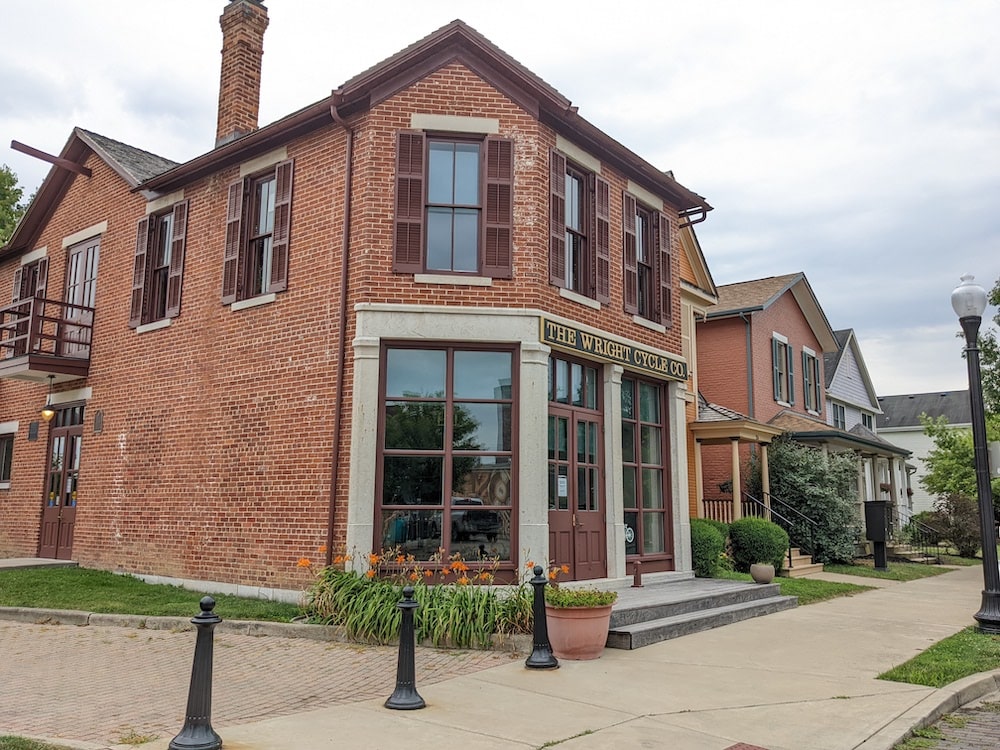
The Wright Cycle Company.
As with the last rally, the Rust Belt Ramble had a daily “Find It” activity. Today’s activity was to locate blue Ohio-shaped markers throughout the state that marked the level of the Great Flood of 1913. While I didn’t find the blue markers, I did pass the RiverScape MetroPark in downtown Dayton which had its own concrete pillars that marked the flood level. The flood took place in March of 1913, dumping as much as 11 inches of rain in some parts of the area. Dayton alone was under 10 feet of water, and the flood affected many other cities in Ohio as well as spreading through Indiana and several other states.
At the end of each rally day, we had a suggested location of where to meet. Today’s location was America’s Packard Museum in Dayton, a fantastic exhibit full of restored cars in a building that is set up like a Packard dealership from the 1930s. The building itself was originally a Packard dealership. As my grandfather had worked for Packard for over 25 years, I couldn’t help but wonder which of these classic automobiles he may have had a hand in building, the same as I wondered which of the buildings he may have worked in.
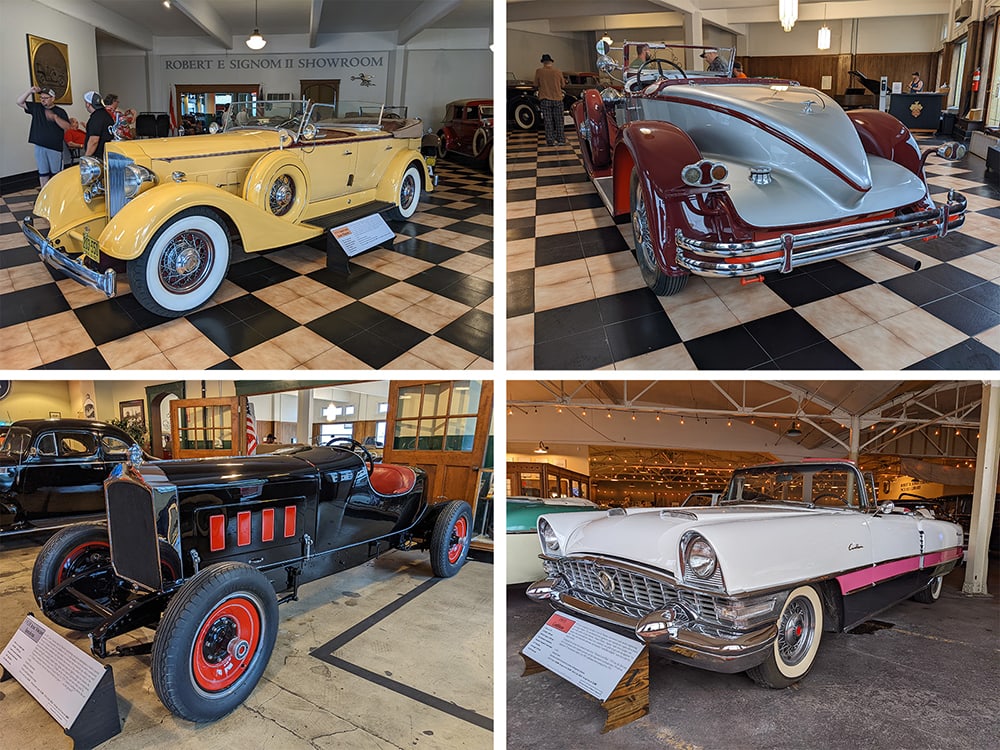
Some of the magnificent cars at the National Packard Museum.
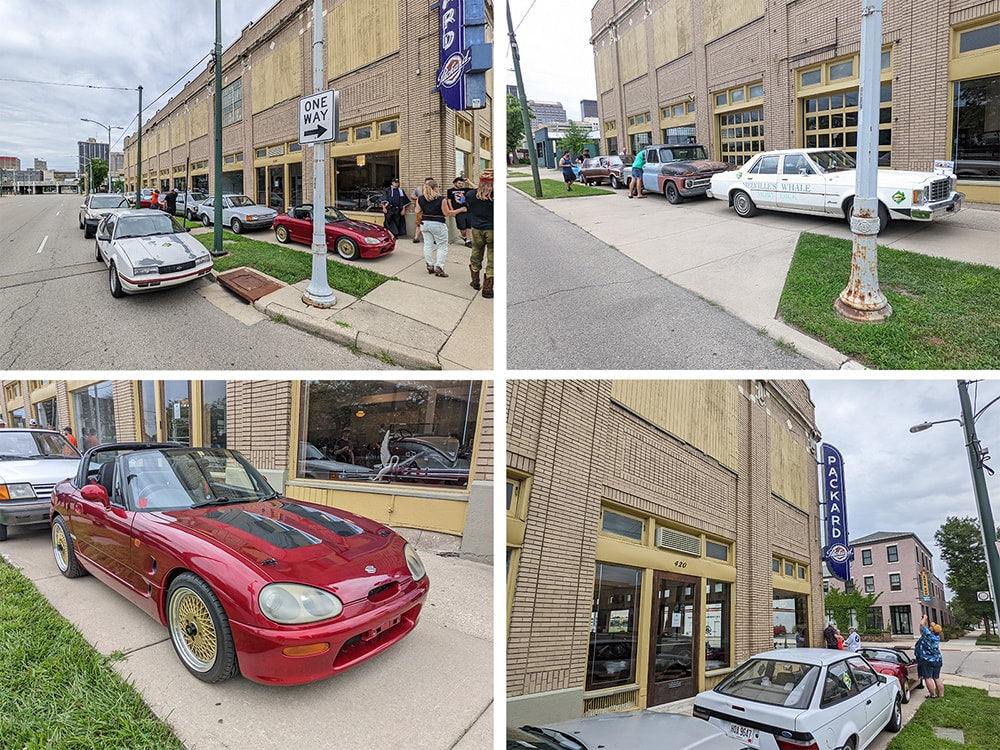
Some of the rally cars outside the museum.
The museum opened up for a couple of hours to accommodate our group. Once we were done with the museum visit, I continued to a restaurant in Beavercreek to grab dinner, and check into the hotel so I could plan out the next day’s rally route.
In Part Two, the rally departs in the morning for more of Ohio, with a couple of surprising destinations later in the day.
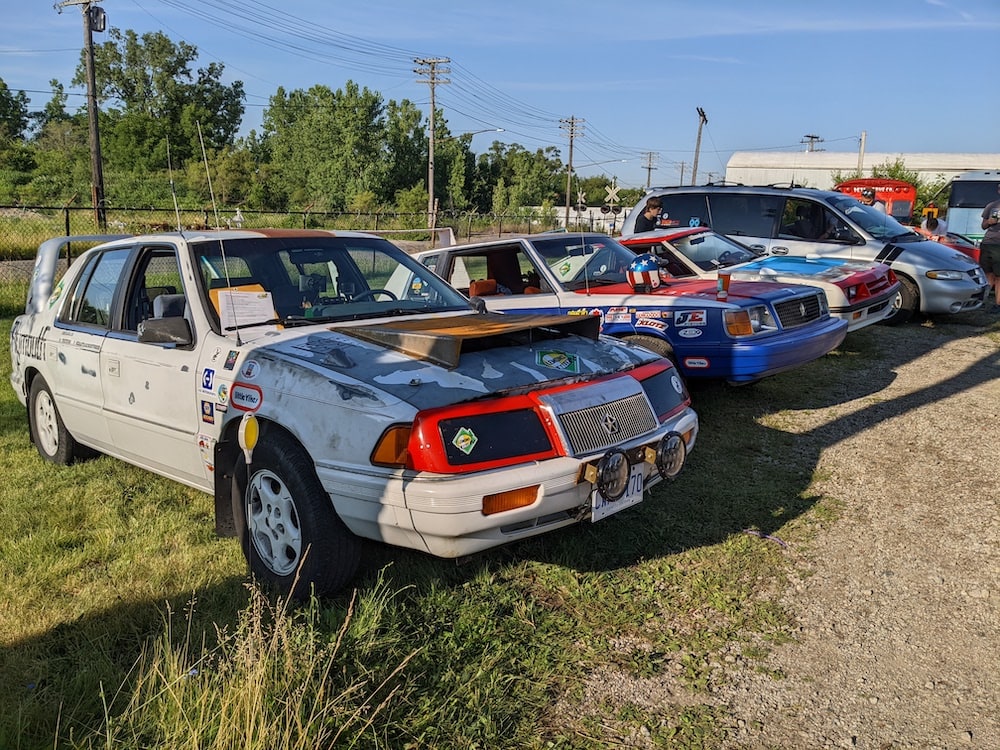
What would you do if your Uber driver showed up in one of these?
Header image: a Smart ForTwo, done up as a Little Tikes Cozy Coupe (with a real one on the back) really captures the spirit of the Lemons Rally. The team calls themselves Little Yikes. All images courtesy of the author.













0 comments